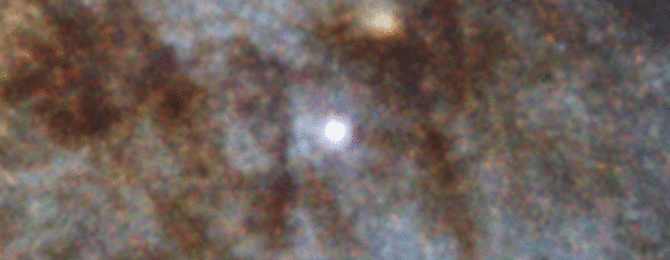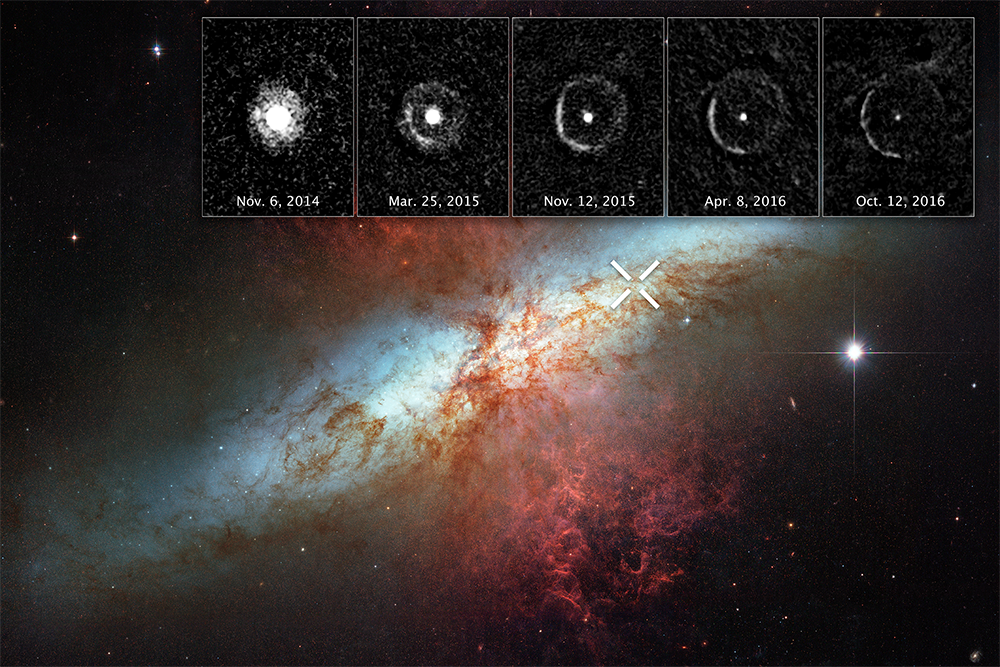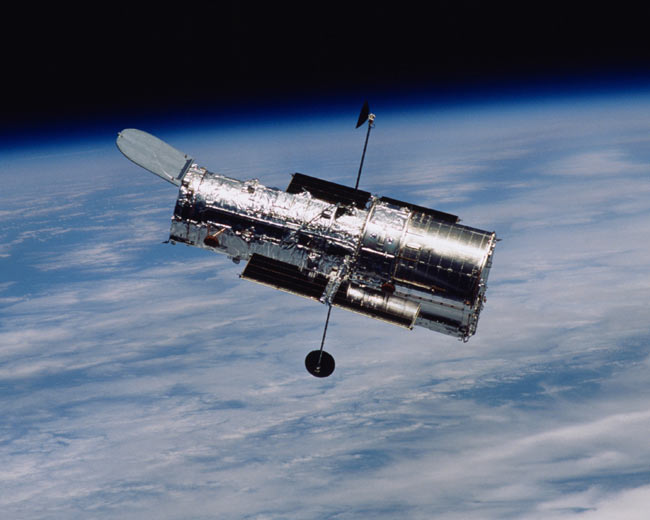Supernova's Expanding 'Echo' of Light Captured by Hubble Telescope
It did not go quietly into the night: An exploding star left behind an echo of light, captured by the Hubble Space Telescope.
In a sequence of images captured over the course of two years, Hubble scientists tracked a ring of light as it appeared to expand outward into space. This light came from an initial stellar explosion — which was first identified three years ago — reflecting off a nearby gas cloud, according to a statement from the Space Telescope Science Institute's Hubble site.

"Voices reverberating off mountains and the sound of footsteps bouncing off walls are examples of an echo," the statement said. "Space has its own version of an echo. It's not made with sound, but with light and occurs when light bounces off dust clouds." [The Hubble Telescope's 10 Most Amazing Discoveries]

The initial explosion was a supernova called SN 2014J, discovered on Jan. 21, 2014, in the nearby galaxy M82, located 11.4 million light-years away from Earth. Stars larger than the sun turn into supernovas when they run out of fuel, leading to a chain reaction of energetic events including the explosion of material.
"So far, astronomers have spotted only 15 light echoes around supernovae outside our Milky Way galaxy," according to the statement. "Light-echo detections from supernovae are rarely seen, because they must be nearby for a telescope to resolve them."

Follow Calla Cofield @callacofield. Follow us @Spacedotcom, Facebook and Google+. Original article on Space.com.
Get the Space.com Newsletter
Breaking space news, the latest updates on rocket launches, skywatching events and more!
Join our Space Forums to keep talking space on the latest missions, night sky and more! And if you have a news tip, correction or comment, let us know at: community@space.com.

Calla Cofield joined Space.com's crew in October 2014. She enjoys writing about black holes, exploding stars, ripples in space-time, science in comic books, and all the mysteries of the cosmos. Prior to joining Space.com Calla worked as a freelance writer, with her work appearing in APS News, Symmetry magazine, Scientific American, Nature News, Physics World, and others. From 2010 to 2014 she was a producer for The Physics Central Podcast. Previously, Calla worked at the American Museum of Natural History in New York City (hands down the best office building ever) and SLAC National Accelerator Laboratory in California. Calla studied physics at the University of Massachusetts, Amherst and is originally from Sandy, Utah. In 2018, Calla left Space.com to join NASA's Jet Propulsion Laboratory media team where she oversees astronomy, physics, exoplanets and the Cold Atom Lab mission. She has been underground at three of the largest particle accelerators in the world and would really like to know what the heck dark matter is. Contact Calla via: E-Mail – Twitter









